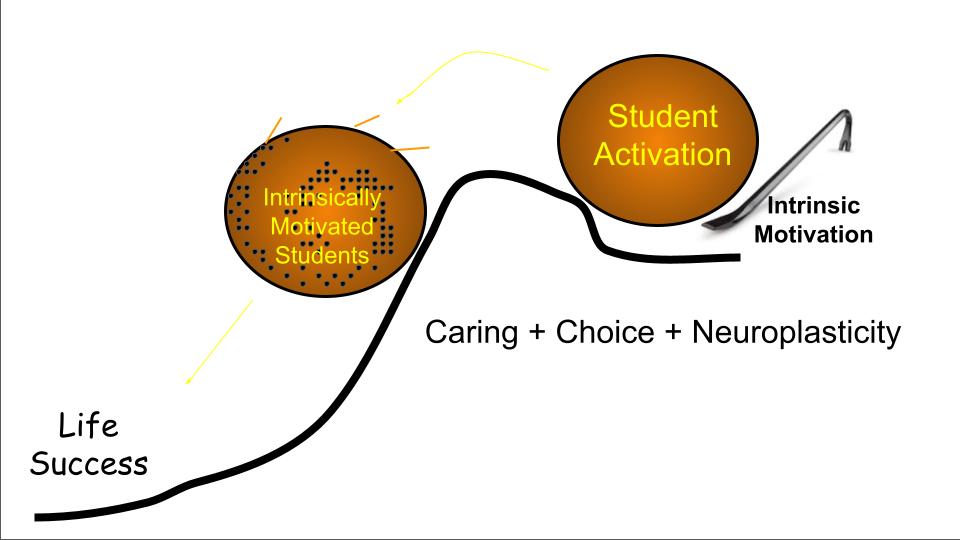Intrinsic motivation is defined as performing an action or behavior because you enjoy the activity itself. What are the essential components comprising intrinsic motivation, and how can educators spark that flame in their students?
One of the critical goals of education is to teach individuals how to learn, especially when they leave the confines of the classroom. As early as fifty years ago, James Coleman from Johns Hopkins University found that students’ attitudes regarding the amount of control they had over their lives directly affected their achievement. The self-determination theory of Ryan and Deci in 2000 proposes that two of the essential components related to intrinsic motivation include autonomy and competence.
Schools can provide opportunities to be autonomous and support learners’ feelings of competence by offering positive reinforcement for sustained effort. Materials and procedures for accomplishing learning tasks can promote intrinsic motivation. Choices can range from the selection of electives to the order in which students complete assignments to the types and scope of projects they will submit. Several educational philosophies and organizations promote the concept of self determination through practices like project-based learning to promote intrinsic motivation and a love of life-long learning. Some examples are below:
Over 100 years ago, Maria Montessori established the Montessori method for pre-school children. This is an education philosophy and practice that fosters rigorous, self-motivated growth for children and adolescents in all areas of their development, with a goal of nurturing each child’s natural desire for knowledge, understanding, and respect. Learning centers are the hallmark of the Montessori Method. Children work independently and in groups. This method fosters rigorous, self-motivated growth for children and adolescents in all areas of their development—cognitive, emotional, social, and physical. In fact, Jeff Bezos, founder of Amazon, and a Montessori pre-school alumnus, has provided philanthropic support for the development of nation-wide Montessori -inspired education.
Another educational philosophy, the Waldorf Schools, established by Rudolf Steiner in the early 20th. Century promote a developmentally appropriate, experiential, and academically rigorous approach to education. They stress Intellectual flexibility, creative thinking, independent judgment, moral discernment, refined written and oral communication skills, and the ability to collaborate effectively. The curriculum, pedagogy, and teaching methods are designed to nurture these capacities and more.
A more recent addition to education that promotes autonomous learning with an aim to inspire intrinsic motivation, The Metropolitan Regional Career and Technical Center was established in 1993. Students all have individual learning plans and accumulate credits toward traditional subject areas through projects, self-directed study, internship experience and dual enrollment with local colleges.This new learning model has its risks, however, because Met students do not fare well on standardized exams. Met school leaders prefer to focus on student engagement, graduation rates, and college performance. Student engagement and success statistics persuade school leaders that the model works. They also persuaded the Bill & Melinda Gates Foundation to pour $20 million into helping Big Picture Learning (an organization that support self directed, real life learning) expand The Met’s model to other schools
Changing the educational paradigm has its challenges, but the rewards in intrinsic motivation may outweigh them.


